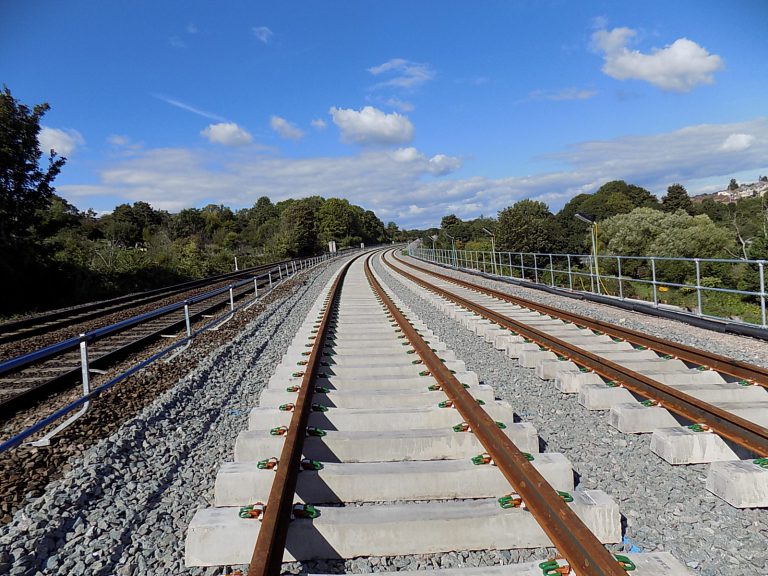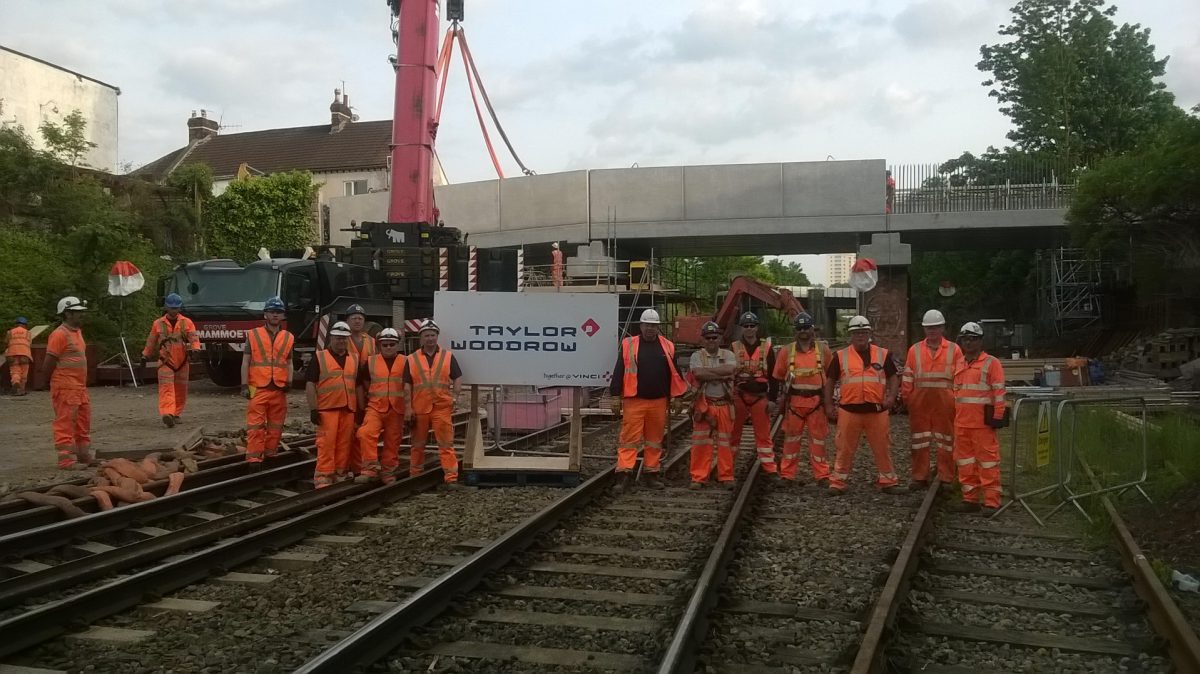Railway track improvement in Bristol achieves CEEQUAL rating of Good
Overview
This section of railway track was rebuilt and electrified to improve the line near Bristol in the UK. The client worked with local suppliers to retain benefits in the local economy, and took care to reduce any negative impacts on local communities and the environment. It was awarded a CEEQUAL rating of Good.
Background
Filton Bank was a design and build project, reinstating 2 former tracks between Dr Days Junction to the south and Filton Junction to the north. This is a stretch of around five miles. It also undertook various works to enable future electrification of the route.
The principal contractor for the works was Taylor Woodrow, the Civil Engineering Division of VINCI Construction UK Ltd (VCUK). VCUK is a subsidiary of VINCI plc. The designer was Arup and the track works specialist was Amey and Trackwork. These partners
The project included the following works:
Ground investigation and surveys
Earthworks to embankments/cuttings (Horfield Cutting, Ashley Hill Embankment, Muller Road, Narroways Cutting)
Track bed formation
Track drainage
Plain line
S&Cs and turn outs
Replacement or waterproofing/refurbishment or parapet works to 14 bridges along the route including major works at Easton Road Bridge and Stapleton Road Viaduct
Station works at Filton Abbey Wood and Stapleton Road
Lawrence Hill Sewer modification
Culvert works
Relocation of 2 No. GSM-R masts
Limited elements of signalling, telecoms and E&P works
Challenges
The location of the project was in a densely populated residential area of Bristol. One of the key challenges was minimising our impact on residents. The project achieved this through effective traffic management strategies, including diversion routes, one-way systems and in some cases alternative transport methods. Silent plant was also used where possible and white noise reverse alarms installed.
Solutions
People and communities
Approximately 70% of subcontracted works were allocated to suppliers within a 50-mile radius of the project. This far exceeded the original target of 50% and ensured that the project provided benefits to the local workforce.
At the start of the project, the Filton Bank team chose the Jessie May Trust, a local children’s hospice as their preferred charity. In the lifetime of the project, the team raised over £12,000 through various fundraising activities. In addition, several other organisations benefited from staff undertaking voluntary work, including the Avon Wildlife Trust, as well as materials being donated to local allotments and St Werburgh’s Community Farm.
Energy, water, materials use and waste management
Solar and hydrogen fuel cell technology was used increasingly throughout the lifetime of the project. Track specialists Amey used hydrogen powered tower lights, which inspired TW to trial solar tower lights, and in addition following their success, temporary solar powered street lighting. This provided benefits not only due to reduced fuel and maintenance costs, but also a reduction in localised air pollution, CO2 emissions and noise nuisance.
Ecology and biodiversity
Specialist contractors Henderson & Taylor were procured to manage several areas containing Japanese Knotweed (JKW). Their innovative solution of excavating material containing JKW, separating the rhizomes from the soil and incinerating on site, allowed for the treated soil to be returned to the same location, avoiding the need for disposal off site, thereby reducing disposal costs, as well as carbon emissions and traffic congestion of muckaway wagons.
Transport
Trains were utilised during the 23-day blockade in October 2018 to bring in ballast and other materials for the construction of two new tracks. Waste was also taken off site via trains. This alternative form of transport allowed for hundreds of vehicles to be taken off the road, reducing the impact of noise, air pollution, CO2 emissions and traffic congestion on residents, local businesses and road users.

Benefits
Using CEEQUAL led to reduced carbon emissions through the use of innovative construction methods. It also inspired the project team to bring forward the use of solar technology through the use of solar tower lights and temporary street lighting. Trains were used wherever possible to transport materials in and remove waste off site, helping to reduce the impact on residents and the public highways.
Local suppliers and workforce were prioritised during procurement wherever possible and numerous community projects were arranged, including charity gigs, voluntary work days and material donations.

Summary
Dawn Love and Geraint Matthews, Taylor Woodrow
Alison Morrisy, Aecom
